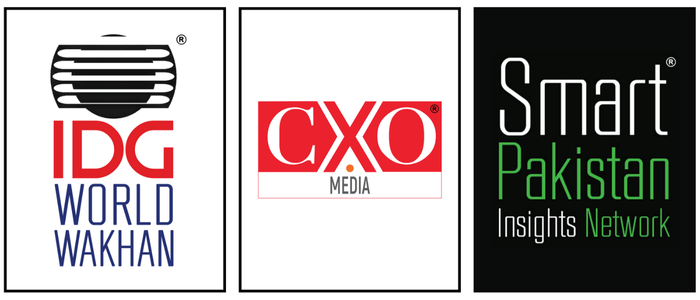The VMware–Forbes CIO 2025 Global Report captures a pivotal moment in enterprise history. The role of the Chief Information Officer, once defined narrowly by infrastructure management and back-office support, is being redefined as a central driver of business strategy. The report makes clear that CIOs are assuming greater responsibility for growth, innovation, and resilience than ever before. By 2025, their mandate extends beyond technology to encompass revenue generation, customer experience, and organizational design.
A Global Shift in the CIO Mandate
Across the world, CIOs are stepping into leadership spaces traditionally reserved for chief executives and financial officers. They are increasingly tasked with steering companies through technological disruption, managing digital ecosystems, and shaping revenue strategies. The report’s findings highlight that most CIOs now see themselves as the executives most responsible for accelerating enterprise-wide change.
This elevation is not incidental. It is the direct result of three intersecting trends reshaping global enterprises. First, the widespread adoption of multicloud architectures has turned cloud computing from an IT function into a strategic foundation. Second, the acceleration of application modernization has made customer-centric digital experiences the primary driver of competitive advantage. Third, hybrid and distributed workforces have permanently restructured how organizations operate, making secure, seamless digital infrastructures essential to productivity and talent retention.
Multicloud as a Strategic Foundation
The report emphasizes that multicloud has become one of the defining forces shaping enterprise futures. Nearly all surveyed CIOs report having a multicloud strategy, and the share of organizations using more than one provider is set to rise dramatically by 2025. The logic is straightforward: distributed architectures mitigate risk, enable regulatory flexibility, and allow enterprises to capture innovation across multiple environments—whether public, private, or edge.
Challenges remain around interoperability, integration, and cost management. Yet the consensus is clear: organizations that fail to adopt multicloud will struggle to remain agile in volatile markets. For CIOs, the management of multiple platforms is no longer just a technical challenge but a strategic requirement tied directly to business resilience.
Application Modernization as a Competitive Necessity
Application modernization is presented as another central pillar of the CIO’s agenda. Modernized, cloud-native applications are directly linked to faster innovation cycles, stronger customer engagement, and supply chain efficiency. By 2025, the number of organizations managing a larger portfolio of modern applications is expected to nearly double, reflecting the recognition that legacy systems are incompatible with the speed and flexibility the digital economy demands.
For global CIOs, modernization is less about updating IT infrastructure and more about embedding customer-centricity into every digital experience. Those who fail to modernize risk being overtaken by digital-native competitors that can move faster and offer seamless engagement at scale.
Hybrid Work as a Permanent Architecture
The rise of hybrid and distributed workplaces is another defining theme of the report. CIOs now view digital workplace architecture as inseparable from organizational performance. The challenge is not just technical; it is strategic. Secure, consistent, and frictionless digital work environments are necessary to attract and retain talent in competitive labor markets. At the same time, hybrid work exposes enterprises to new risks, expanding the threat surface for cyberattacks and requiring integrated security across platforms.
The report situates CIOs at the center of this transformation, making them responsible for both enabling productivity and safeguarding enterprise assets. Hybrid work is no longer a temporary adaptation; it is an enduring structure that must be designed into the organization’s core operating model.
The CIO of 2025: A Global Outlook
Taken together, the report positions the CIO as a growth architect. By 2025, CIOs are expected to lead multicloud adoption, oversee enterprise-wide application modernization, and design the digital infrastructures that sustain hybrid workforces. Their influence now extends directly to revenue strategies, board-level decision-making, and long-term competitiveness.
Implications for Pakistan and South Asia
The global findings of the VMware–Forbes CIO 2025 report resonate sharply in Pakistan and its neighboring economies, where demographic pressures, economic reform, and digital adoption are converging to create a moment of accelerated transformation.
Demographics Driving Digital Demand
Pakistan’s youth-heavy demographic profile—nearly 170 million people under the age of 30—creates immense demand for digital services across financial services, health, retail, and education. This demographic dividend presents both an opportunity and a challenge: CIOs must rapidly scale digital infrastructure to meet expectations shaped by mobile-first behaviors and global digital standards.
Cloud and Multicloud Adoption in a Local Context
While global CIOs move decisively toward multicloud, Pakistan remains at an earlier stage of cloud maturity. Public cloud adoption is growing steadily, valued in the billion-dollar range and rising at strong annual rates, but penetration varies across sectors. Telecom operators and financial institutions are experimenting with distributed models, while manufacturing and retail remain more cautious.
For Pakistani enterprises, the strategic case for multicloud is amplified by local realities. Outages, regulatory shifts, and geopolitical vulnerabilities make reliance on a single provider risky. In this context, adopting multicloud is less about innovation speed and more about continuity and resilience. As neighboring economies such as India rapidly expand distributed cloud ecosystems, Pakistan’s enterprises must accelerate adoption to remain competitive.
Application Modernization and Competitive Pressure
Pakistan’s financial sector demonstrates the transformative power of application modernization. The nationwide rollout of the instant payments platform has facilitated trillions of rupees in peer-to-peer transfers, forcing banks and fintechs to redesign applications for speed and reliability. Similar pressures are now reaching other sectors, yet modernization remains inconsistent.
Healthcare providers, manufacturers, and SMEs are still constrained by legacy systems that limit efficiency and scalability. Without modernization, these sectors risk falling further behind both domestic digital leaders and regional competitors. For Pakistani CIOs, modernization is no longer optional; it is a prerequisite for survival in an economy where consumer expectations are shifting rapidly.
Hybrid Work and the Workforce Challenge
The move toward hybrid work in Pakistan has been complicated by infrastructure constraints such as energy shortages and uneven broadband coverage. Despite this, demand for flexible work arrangements is increasing, particularly among younger professionals in IT, banking, and services. Enterprises that fail to adapt risk losing skilled employees to regional or remote opportunities.
National programs in digital skills training are beginning to build a workforce capable of supporting hybrid models. Large-scale initiatives in freelancing, e-commerce, and AI have produced a pipeline of digitally literate talent. CIOs must integrate this evolving workforce into enterprise strategies, ensuring that hybrid models are supported not only by technology but also by skills and organizational culture.
Aligning with National Digital Strategies
Pakistan’s broader economic vision places digital infrastructure at the heart of transformation. National initiatives are expanding ICT exports, promoting digital payments, and laying the groundwork for advanced infrastructure such as AI data centers. For CIOs, this creates both opportunities and obligations. Enterprise IT strategies must align with these national frameworks to access incentives, remain compliant, and contribute to broader economic goals.
The Regional CIO Mandate
The VMware–Forbes CIO 2025 Global Report makes clear that the CIO is now a central figure in shaping enterprise futures. In Pakistan and South Asia, the stakes are even higher. The demographic dividend, the urgency of cloud adoption, the uneven pace of modernization, and the challenges of hybrid work all converge to place CIOs at the center of transformation.
By 2025, the CIO in Pakistan will not be judged by their ability to maintain infrastructure but by their capacity to build growth architectures, enable customer-centric modernization, and align enterprise strategy with national digital priorities. The report frames a global shift, but for Pakistan and its neighbors, it defines nothing less than the trajectory of competitiveness in the digital decade ahead.
Follow the SPIN IDG WhatsApp Channel for updates across the Smart Pakistan Insights Network covering all of Pakistan’s technology ecosystem.





